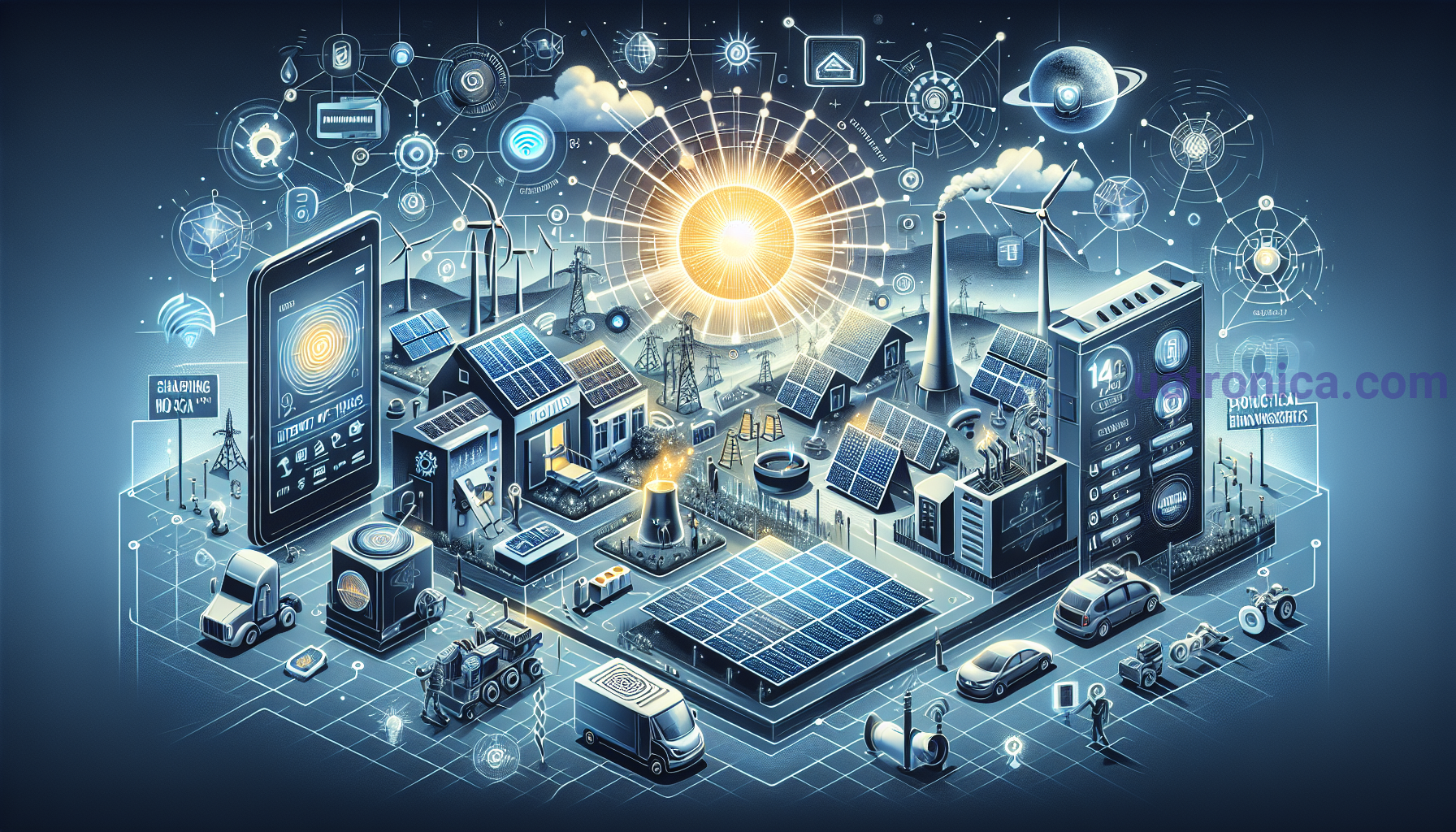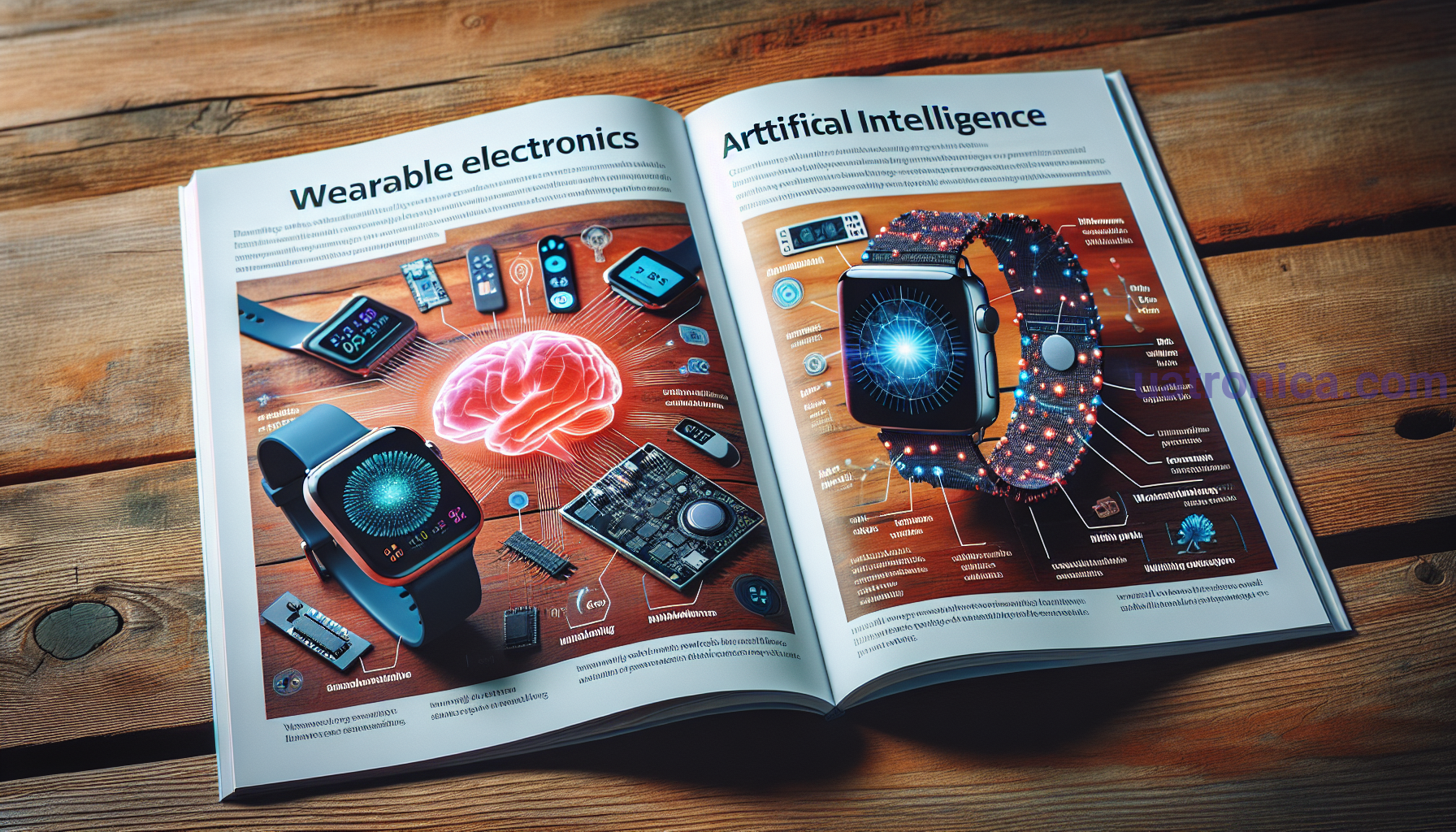<title>A review of 14 revolutionary scientific discoveries that will push the future of electronics</title>
<h1>A review of 14 revolutionary scientific discoveries that will push the future of electronics</h1>
<!-- wp:heading {"level":2} --><h2>Introduction</h2><!-- /wp:heading -->
<!-- wp:paragraph --><p>Nowadays, electronics are an integral part of our everyday life. It is in everything around us: in our smartphones, computers, cars and even in home appliances. The rapid development of technologies causes the emergence of new discoveries and innovations in this field. In this review, we look at 14 revolutionary scientific discoveries that are driving the future of electronics.</p><!-- /wp:paragraph -->
<!-- wp:heading {"level":2} --><h2>1. Quantum computers</h2><!-- /wp:heading -->
<!-- wp:paragraph --><p>The first revolutionary discovery that we will consider is the development of quantum computers. Quantum computers are based on the principles of quantum mechanics, which allows them to process large amounts of information faster than traditional computers.</p><!-- /wp:paragraph -->
<!-- wp:heading {"level":2} --><h2>2. Graphene</h2><!-- /wp:heading -->
<!-- wp:paragraph --><p>Graphene is a single-layer material that consists of carbon. It has a lot of potential for electronics because it has unique physical properties such as high electrical conductivity and mechanical strength.</p><!-- /wp:paragraph -->
<!-- wp:heading {"level":2} --><h2>3. Quantum dot</h2><!-- /wp:heading -->
<!-- wp:paragraph --><p>Quantum dots are nanoparticles embedded in semiconductor materials. They allow you to use the intensity of the glow more efficiently, and also change their properties depending on the size and shape.</p><!-- /wp:paragraph -->
<!-- wp:heading {"level":2} --><h2>4. 3D printing</h2><!-- /wp:heading -->
<!-- wp:paragraph --><p>3D printing is the process of creating physical objects by applying material layer by layer. This can be used to create various electronic components, such as printed circuit boards and sensors, opening up new possibilities in the design and manufacture of electronic devices.</p><!-- /wp:paragraph -->
<!-- wp:heading {"level":2} --><h2>5. Internet of things</h2><!-- /wp:heading -->
<!-- wp:paragraph --><p>The Internet of Things (IoT) connects physical devices to Internet networks, allowing them to exchange data. This enables devices to be monitored and controlled via mobile applications, and also provides data collection and processing for further analysis and use.</p><!-- /wp:paragraph -->
<!-- wp:heading {"level":2} --><h2>6. Photovoltaics</h2><!-- /wp:heading -->
<!-- wp:paragraph --><p>Photovoltaics is the process of converting solar energy into electrical energy. It is based on the use of the photoelectric effect, which is caused by the absorption of light by a semiconductor. Photovoltaic cells are used to produce solar panels, which provide energy for various electronic devices.</p><!-- /wp:paragraph -->
<!-- wp:heading {"level":2} --><h2>7. Quantum network</h2><!-- /wp:heading -->
<!-- wp:paragraph --><p>A quantum network is a new type of network that uses quantum mechanics to transmit and process information. Quantum networks can provide greater security and data transfer speeds compared to traditional networks.</p><!-- /wp:paragraph -->
<!-- wp:heading {"level":2} --><h2>8. Quantum computing network</h2><!-- /wp:heading -->
<!-- wp:paragraph --><p>A quantum computing network is a network of quantum computers that work together to solve complex computational problems. This allows for faster and more efficient solving of problems that cannot be solved with the help of traditional computers.</p><!-- /wp:paragraph -->
<!-- wp:heading {"level":2} --><h2>9. Energy-independent devices</h2><!-- /wp:heading -->
<!-- wp:paragraph --><p>Energy-independent devices are devices that do not require an energy source to operate. They work at the expense of various energy sources, such as vibrations or thermal energy of the surrounding environment.</p><!-- /wp:paragraph -->
<!-- wp:heading {"level":2} --><h2>10. Wireless charging</h2><!-- /wp:heading -->
<!-- wp:paragraph --><p>Wireless charging is a technology that allows you to transfer energy without using wires or contacts. This can be used to charge various electronic devices such as smartphones and headphones without connecting to a power source.</p><!-- /wp:paragraph -->
<!-- wp:heading {"level":2} --><h2>11. Wearable electronics</h2><!-- /wp:heading -->
<!-- wp:paragraph --><p>Wearables are electronic devices that can be worn on the body, such as smart watches and fitness bands. They allow you to track physical activity, collect health data and provide various useful functions.</p><!-- /wp:paragraph -->
<!-- wp:heading {"level":2} --><h2>12. Artificial intelligence</h2><!-- /wp:heading -->
<!-- wp:paragraph --><p>Rests, neural networks and deep learning are just a few of the principles that underlie artificial intelligence. Artificial intelligence allows computers to "learn" and perform various tasks that previously required human intelligence.</p><!-- /wp:paragraph -->
<!-- wp:heading {"level":2} --><h2>13. Smart materials</h2><!-- /wp:heading -->
<!-- wp:paragraph --><p>Smart materials are materials that have the ability to respond to changes in their environment. For example, smart materials can change their shape or conductivity under the influence of external factors.</p><!-- /wp:paragraph -->
<!-- wp:heading {"level":2} --><h2>14. Bioelectronics</h2><!-- /wp:heading -->
<!-- wp:paragraph --><p>Bioelectronics is a field that combines electronics and biology. She investigates the use of electronic devices to control and interact with living organisms.</p><!-- /wp:paragraph -->
<!-- wp:heading {"level":2} --><h2>Conclusion</h2><!-- /wp:heading -->
<!-- wp:paragraph --><p>In this review, we look at 14 revolutionary scientific discoveries that are driving the future of electronics. These discoveries lead to significant changes in the field of electronics and lead to the development of new technologies and innovations. How far these changes will affect our daily lives, time will tell.</p><!-- /wp:paragraph -->
<!-- wp:paragraph --><p>For more information about revolutionary scientific discoveries and electronics, we recommend that you view these interesting pages:</p><!-- /wp:paragraph -->
<!-- wp:paragraph --><p>1. <a href="https://uatronica.com/en/novyny-elektronnyh-komponentiv/reczenziya-na-10-novyh-ukovyh-vidkryttiv-u-sviti-napivprovidnykiv-nejmovirni-innovaczyiy-yaki-zminyat-majbutnye-elektroniky/">Article about 10 new scientific discoveries in the world of semiconductors and innovations that will change the future of electronics</a></p><!-- /wp:paragraph -->
<!-- wp:paragraph --><p>2. <a href="https://uatronica.com/en/novyny-elektronnyh-komponentiv/oglyad-14-vrazhayuchyh-naukovyh-dosyagnen-shho-zminyat-majbutnye-elektroniky-ta-napivprovidnykiv-2/">An in-depth look at 14 mind-blowing scientific breakthroughs that will change the future of electronics and semiconductors</a></p><!-- /wp:paragraph -->
<!-- wp:paragraph --><p>Nowadays, electronics are an integral part of our everyday life. It is in everything around us: in our smartphones, computers, cars and even in home appliances. The rapid development of technologies causes the emergence of new discoveries and innovations in this field. In this review, we look at 14 revolutionary scientific discoveries that are driving the future of electronics.
1. Quantum computersThe first revolutionary discovery that we will consider is the development of quantum computers. Quantum computers are based on the principles of quantum mechanics, which allows them to process large amounts of information faster than traditional computers.
2. GrapheneGraphene is a single-layer material that consists of carbon. It has a lot of potential for electronics because it has unique physical properties such as high electrical conductivity and mechanical strength.
3. Quantum dotQuantum dots are nanoparticles embedded in semiconductor materials. They allow you to use the intensity of the glow more efficiently, and also change their properties depending on the size and shape.
4. 3D printing3D printing is the process of creating physical objects by applying material layer by layer. This can be used to create various electronic components such as printed circuit boards and sensors, opening up new possibilities in the design and manufacture of electronic devices.

The Internet of Things (IoT) connects physical devices to Internet networks, allowing them to exchange data. This enables devices to be monitored and controlled via mobile applications, and also provides data collection and processing for further analysis and use.
6. PhotovoltaicsPhotovoltaics is the process of converting solar energy into electrical energy. It is based on the use of the photoelectric effect, which is caused by the absorption of light by a semiconductor. Photovoltaic cells are used to produce solar panels, which provide energy for various electronic devices.
7. Quantum networkA quantum network is a new type of network that uses quantum mechanics to transmit and process information. Quantum networks can provide greater security and data transfer speeds compared to traditional networks.
8. Quantum computing networkA quantum computing network is a network of quantum computers that work together to solve complex computational problems. This allows for faster and more efficient solving of problems that cannot be solved with the help of traditional computers.
9. Energy-independent devicesEnergy-independent devices are devices that do not require an energy source to operate. They work at the expense of various energy sources, such as vibrations or thermal energy of the surrounding environment.
10. Wireless chargingWireless charging is a technology that allows you to transfer energy without using wires or contacts. This can be used to charge various electronic devices such as smartphones and headphones without connecting to a power source.

Wearables are electronic devices that can be worn on the body, such as smart watches and fitness bands. They allow you to track physical activity, collect health data and provide various useful functions.
12. Artificial intelligenceRests, neural networks, and deep learning are just a few of the principles that underlie artificial intelligence. Artificial intelligence allows computers to "learn" and perform various tasks that previously required human intelligence.
13. Smart materialsSmart materials are materials that have the ability to respond to changes in their environment. For example, smart materials can change their shape or conductivity under the influence of external factors.
14. BioelectronicsBioelectronics is a field that combines electronics and biology. She investigates the use of electronic devices to control and interact with living organisms.
ConclusionIn this review, we look at 14 revolutionary scientific discoveries that are driving the future of electronics. These discoveries lead to significant changes in the field of electronics and lead to the development of new technologies and innovations. How far these changes will affect our daily lives, time will tell.
For more information about revolutionary scientific discoveries and electronics, we recommend that you view these interesting pages:
1. Article about 10 new scientific discoveries in the world of semiconductors and innovations that will change the future of electronics2. An in-depth look at 14 mind-blowing scientific breakthroughs that will change the future of electronics and semiconductors









